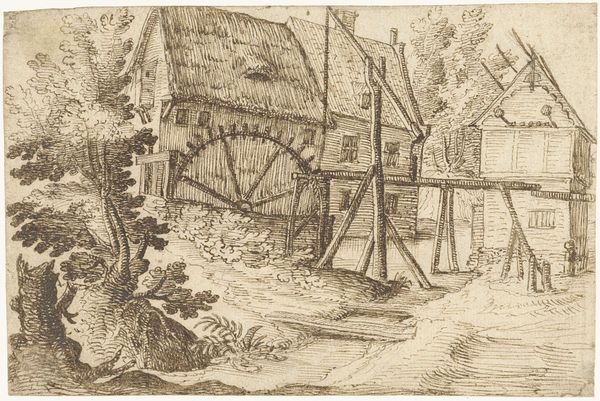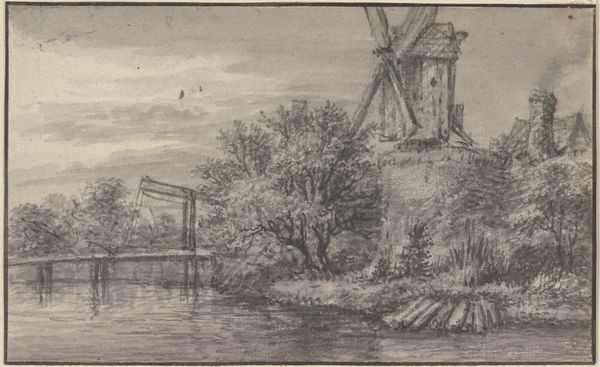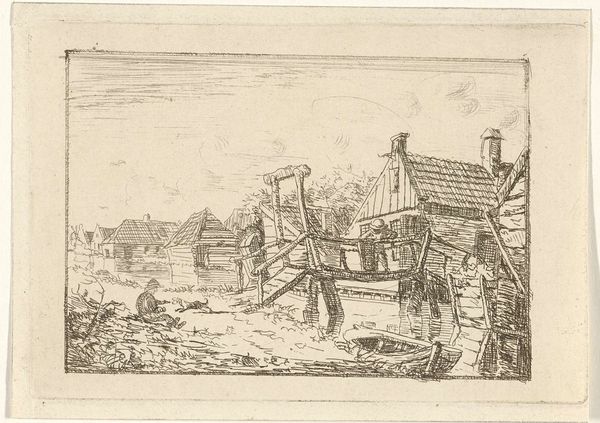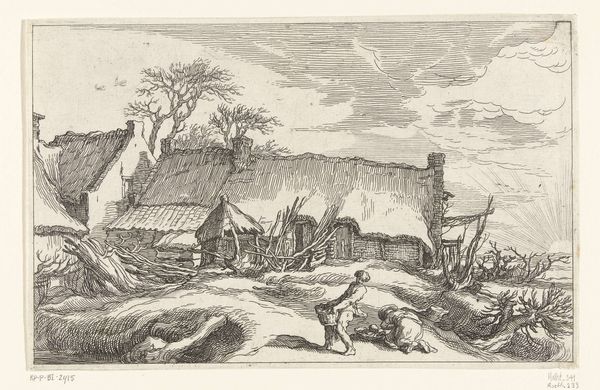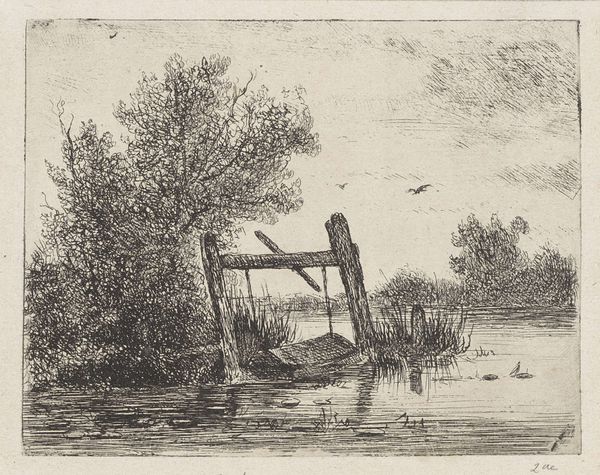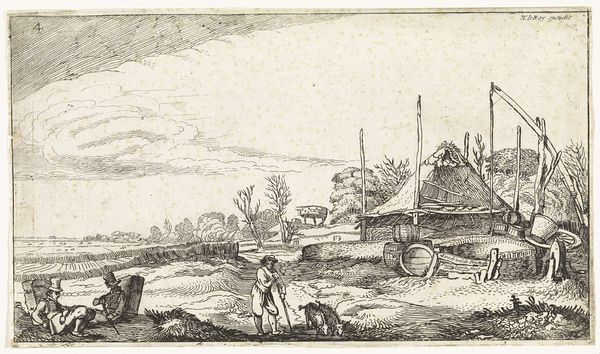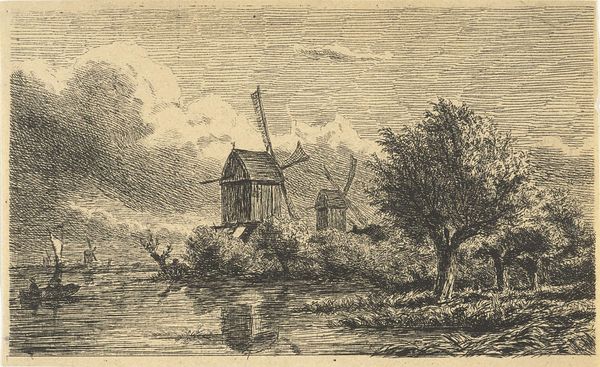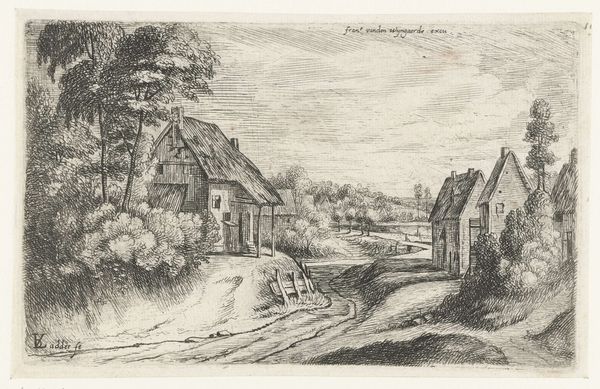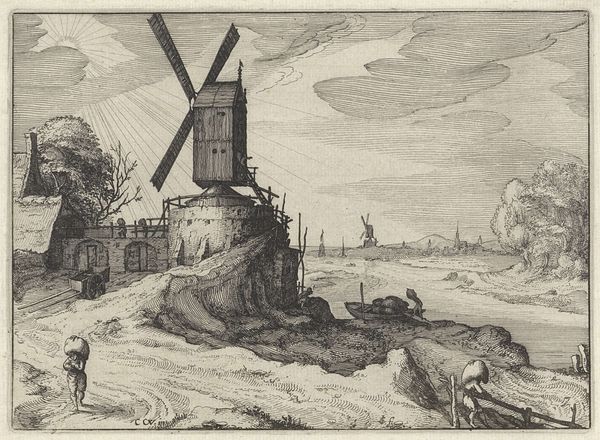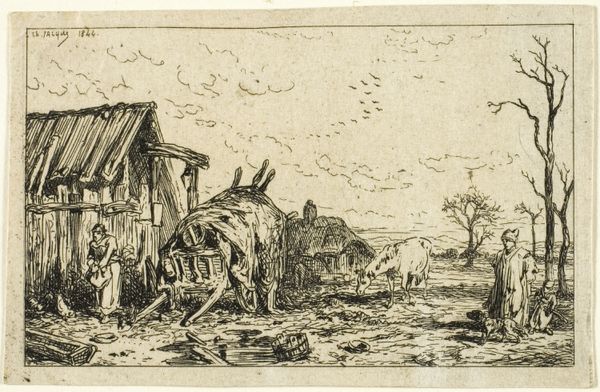
drawing, print, etching
#
drawing
#
dutch-golden-age
# print
#
etching
#
landscape
Dimensions: height 54 mm, width 91 mm
Copyright: Rijks Museum: Open Domain
Curator: Right now, we're looking at "House or Factory on a Canal," an etching created between 1613 and 1617 by Esaias van de Velde, a Dutch Golden Age artist. It’s held here at the Rijksmuseum. Editor: You know, the first thing that hits me is the quietness of it. There's a little house, a little boat, even a little figure, but it feels utterly still, like a captured breath. It’s delicate, even if it features a presumed factory. Curator: Yes, precisely! Van de Velde was working during a period of significant transformation in the Netherlands. The rise of a merchant class fueled urban expansion and industrial development, which were encroaching on traditionally rural settings. This etching captures the early stages of that shift. Editor: The composition is striking. That imposing industrial building looms behind a rickety bridge and dwarfed boat. It feels like nature is slowly yielding to the relentless march of progress. Is that why the drawing itself is so focused on capturing landscape detail? Curator: Van de Velde often used his landscapes to imply commentary on the changing world. Though, unlike later Romantic painters, his tone isn’t explicitly melancholic. This work, while hinting at industrial change, is more an objective observation, a document of its time. His compositions showcase detail – not just in nature but in new structures, showing the evolution of the built environment within society. Editor: And that single figure under the arched entrance! It adds such a poignant human dimension, doesn’t it? Gives scale and significance. Curator: Absolutely! It invites us to ponder the relationship between the individual and the socio-economic currents that shaped their lives. The solitary figure is an everyman of his time, navigating this changing world, or at least part of it! Editor: It's strange, looking at something so clearly tied to industry that nonetheless gives the vibe of introspection and calm, isn’t it? Like witnessing the gears of progress grinding along to some secret, natural rhythm. Curator: I agree. It makes me consider how artists then sought to reconcile technological change and the natural environment as if they existed together from the start. Editor: It certainly grants a fresh, vital angle on both Dutch art history and its impact. Curator: Indeed, something to ponder about as we look at all the history the artwork conveys to the future!
Comments
No comments
Be the first to comment and join the conversation on the ultimate creative platform.


